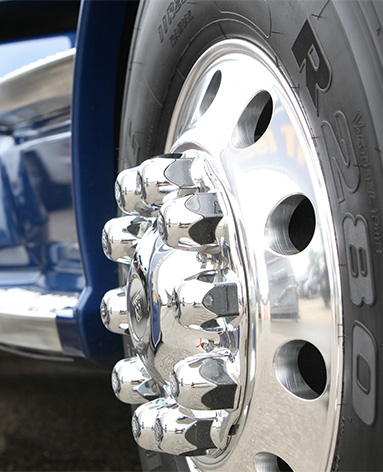Nov . 24, 2024 12:49 Back to list
Changing Brake Drums and Shoes for Improved Vehicle Performance and Safety
Replacing Brake Drums and Shoes A Comprehensive Guide
When it comes to vehicle maintenance, few components are as crucial as the braking system. Among the various parts that make up this system, brake drums and shoes play a significant role in ensuring your vehicle stops safely and efficiently. Over time, these components wear out due to friction and heat, thus requiring replacement to maintain optimal performance. In this article, we will delve into the process of replacing brake drums and shoes, highlighting its importance, the required tools, and a step-by-step guide.
Why Replace Brake Drums and Shoes?
Brake drums and shoes are predominantly found in vehicles with a drum brake system, which is common in older cars and some light trucks. The brake drum houses the brake shoes, which press against the inner surface of the drum to create the friction required for the vehicle to slow down or stop. Here's why replacing these components is essential
1. Safety Worn-out brake shoes can lead to reduced braking efficiency, increasing the risk of accidents. Regular inspection and timely replacement ensure that your vehicle stops as intended.
2. Improved Performance New drum brakes provide superior stopping power compared to worn-out components. This not only enhances your driving experience but also contributes to better fuel efficiency.
3. Cost-Effectiveness Ignoring worn brake shoes and drums can lead to more severe issues in the braking system, resulting in higher repair costs. Regular maintenance and replacement help avoid this scenario.
Tools Required
Before embarking on the replacement process, gather the necessary tools
- Jack and jack stands - Lug wrench - Brake cleaner - Screwdrivers (flathead and Phillips) - Ratchet and socket set - Torque wrench - Replacement brake shoes and drums - Safety goggles and gloves
Step-by-Step Guide to Replacing Brake Drums and Shoes
replacing brake drums and shoes

1. Preparation and Safety Start by parking your vehicle on a flat, stable surface. Engage the parking brake and put on safety goggles and gloves. Loosen the lug nuts of the rear wheels (or front, depending on where you are replacing brakes) using the lug wrench, but do not remove them completely.
2. Jack Up the Vehicle Use the jack to raise the vehicle and secure it with jack stands to ensure stability. Then, remove the lug nuts completely and take off the wheels.
3. Inspect the Brake System Before removing the drum, inspect the entire brake assembly. Look for any signs of wear, such as cracks or excessive dust buildup, and take note of how everything is assembled.
4. Remove the Brake Drum If the drum is stuck, you may need to tap it lightly with a hammer to loosen it. Once removed, inspect the drum for any deep grooves or damage that might require it to be replaced.
5. Remove the Old Brake Shoes Locate the retaining springs and clips holding the brake shoes in place. Use the appropriate screwdriver or pliers to carefully remove these components. Note the arrangement of the shoes and hardware for reassembly.
6. Install New Brake Shoes Position the new brake shoes in the same arrangement as the old ones. Secure them with the springs and clips you removed earlier. Ensure everything is tight and properly aligned.
7. Replace the Brake Drum Once the new shoes are in place, slide the new brake drum onto the wheel hub. Ensure it rotates smoothly without any interference from the shoes.
8. Reassemble the Wheel Place the wheel back onto the hub, hand-tighten the lug nuts, and lower the vehicle back to the ground. Once the vehicle is securely on the ground, use the torque wrench to tighten the lug nuts to the manufacturer’s specifications.
9. Final Checks Before driving, pump the brake pedal a few times to seat the new shoes. Test the brakes at low speeds to ensure everything is functioning correctly.
Conclusion
Replacing brake drums and shoes is a crucial aspect of vehicle maintenance that greatly influences your driving safety and comfort. While the task may seem daunting, following the steps outlined above can make it manageable even for those with limited mechanical experience. Remember always to prioritize safety and consult your vehicle’s manual for any specific instructions related to your make and model. By investing time in this maintenance task, you can ensure the longevity and efficiency of your vehicle's braking system.
-
HINO Industrial Solutions - ¡Ң���ຽ��е��������˾ | Advanced Technology&Reliability
NewsJul.13,2025
-
HINO Industrial Efficiency-Jiangsu Hino Industrial|Productivity Optimization&Cost Reduction
NewsJul.12,2025
-
HINO-¡Ң���ຽ��е��������˾|Advanced Industrial Solutions&Energy Efficiency
NewsJul.12,2025
-
Premium Brake Drum Iveco – Durable Drum Brake Drum & Brake Shoe Solutions
NewsJul.08,2025
-
High-Performance Brake Drum Liza for Enhanced Safety Reliable Drum Brake Drum & Brake Shoe Solutions
NewsJul.08,2025
-
High-Quality Brake Drum MAZ – Durable Drum Brake Drum & Brake Drum and Brake Shoe for Optimal Performance
NewsJul.07,2025
